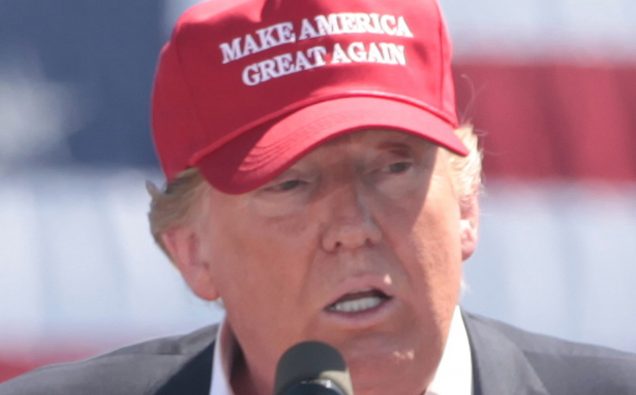
Photo credit: Gage Skidmore via Wikimedia Commons
It won’t be long before the United States, for the 58th time in American history, marks the inauguration of a President to a four-year term in office. Inevitably, commentators and scholars cite the quadrennial event as a measure of national stability – a scheduled transfer of power that takes place without fail.
On January 20th, Donald Trump will become the 45th President of the United States, and while just about everyone was surprised by his victory at the polls, no one is surprised to see that America is installing a new leader right on schedule.
Surprised or not, everyone is waiting to see how Mr. Trump will follow through on his oft-stated campaign pledge – one borrowed from Ronald Reagan’s 1980 campaign – to Make America Great Again.
The presidential inauguration has been held every four years in peacetime and wartime and economic depression since George Washington took the oath of office for the first time at the end of the 18th century. James Madison, a principal author of the US Constitution, was sworn in during a war with England in 1813.
Abraham Lincoln, inaugurated twice during the Civil War, was assassinated a month after taking the oath of office the second time. Woodrow Wilson and Franklin D. Roosevelt were re-elected during the 20th century’s catastrophic world wars, and Dwight Eisenhower became President as the Korean War ground to a stalemate. The Vietnam War continued after the elections of Lyndon Johnson and Richard Nixon, and George W. Bush was sworn in for a second term as war continued in Iraq. Barack Obama’s two-term presidency fell under the shadow of continued low-level conflict in Iraq, the wider Middle East, and Afghanistan.
Despite the disruption of national affairs, the tragic loss of life, and the dislocation of families and economic forces brought about by war and its terrible consequences, Americans have chosen a president every four years since 1788. This remarkable string of on-time elections has often been marked by controversy and, occasionally, open hostility. The politics of presidential campaigns has been cause for bitterness and anger, with opponents launching attacks and calling each other liars, and worse. It has often been said by one candidate that if the other wins it will mean the end of democracy and the death of the Republic. Then the votes are cast and counted, the winner takes the oath of office, and the losing candidates return to their previous lives as public servants or private citizens. The nation takes a deep breath, and gets ready for the next presidential election, four years later.
The balloting this past November was no exception – except that many long-time observers called the election campaign of 2016 a historic milestone, a turning point in American politics, a campaign so vicious and mean-spirited that standards had been lowered, perhaps never to be raised again. Both Democrats and Republicans said – some with irony, some with regret – that the candidate most responsible for the harsh tone of Campaign 2016 is the winner of the election, Donald Trump.
Trump’s opponents note his election night promise to unite the country, but wonder how he will pursue such a goal. Critics in both parties see it as a promise standing in stark contrast to his continuing attacks against ordinary citizens, political figures, and controversial policies of the Obama administration. He continues to lash out as though the campaign never ended, raising questions and doubts about how he will govern as President. It is hard for many Americans to imagine how, in the atmosphere which he is perpetuating, he will follow up on his pledge – to make America great again.
When candidate Ronald Reagan used the phrase “Make America Great Again” during his 1980 campaign for the White House, the nation was recovering – from an energy crisis, a flat economy, the lingering effects of Richard Nixon’s resignation and the war in Vietnam, and a continuing stalemate over US hostages held in the American embassy in Iran. By any measure it was a bad time. In March of 1980, the Washington Post said President Jimmy Carter “could be vulnerable;” two months later the Post headlined an article saying latest polls showed “Reagan now likely” to win November. And win, Reagan did – by almost nine million popular votes, and by a 10 to one landslide margin in the Electoral College.
Whether or not Reagan went on to make American great again is a matter of perception, and historians have been working on that issue since he left office in 1989. But there is general agreement that the Reagan years were marked by enthusiasm for that task, even among Democratic Party leaders in Congress who disagreed with many of Reagan’s policies. There was a desire on both sides to argue their positions while working toward consensus, to tackle the problems of governance, to unite against the common Cold War enemy of the Soviet Union. There was disagreement over policy issues, no doubt about it – but the country was feeling better about things, so much so that voters elected Reagan’s Vice President, George H.W. Bush, in 1988. Those voters, many of them, were likely to agree that America was at least improved, if not great.
What are the prospects for President Donald Trump, and his goal to Make America Great Again? There’s no mistaking his intention, nor his determination; red hats with the slogan are still for sale on his campaign website for twenty-five dollars apiece.













